Review: 2017 Yamaha MT-10SP
Yamaha have released the SP version of the MT-10 for 2017, with Ohlins electronic suspension, quick shifter and special paint. What a weapon! Here's our review. Test by Kris Hodgson, Jeff Ware, Images by Kris Hodgson, Colin Chan
Yamaha’s MT-10 is a distinct offering, even among the MT family, which has taken the futuristic styling to a new level, and this R1 derived machine saw a very positive reception. Sadly I didn’t get a chance to test the standard version, but I’ve certainly enjoyed sampling the 2017 MT-10SP, the up-spec Ohlins electronic (Racing) suspension equipped version.
My first impression was a 20-minute ride through incredibly congested Sydney traffic, where the heavy clutch became quickly noticeable, which may have been this bike as Jeff points out, it was really light on the standard bike. And when I did get out onto the regular hunting ground it took me a while to get used to the Ohlins suspension, not to mention the fueling and throttle response characteristics.
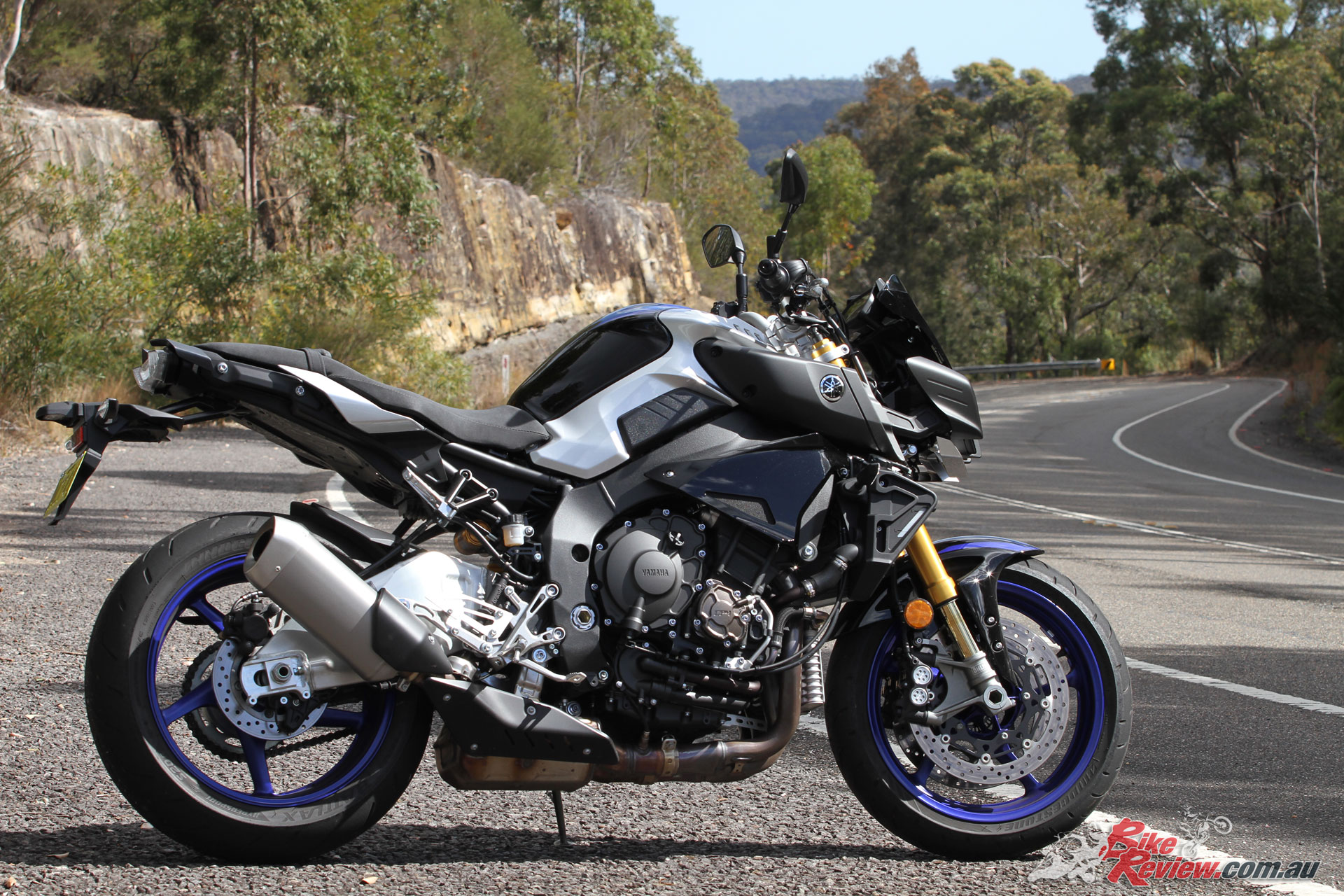
The MT-10SP is the up-spec version with Ohlins electronic suspension, a quickshifter, TFT display and an R1M inspired paint job.
Cruising in second gear at 90km/h only really just has you starting to enter the meat of the bike’s performance, with below 7000rpm offering smooth power. Meanwhile over 7000rpm you get an amazing (staggering… mind bending) punch of torque. Believe me when I say you want to spend your time above 7000rpm…
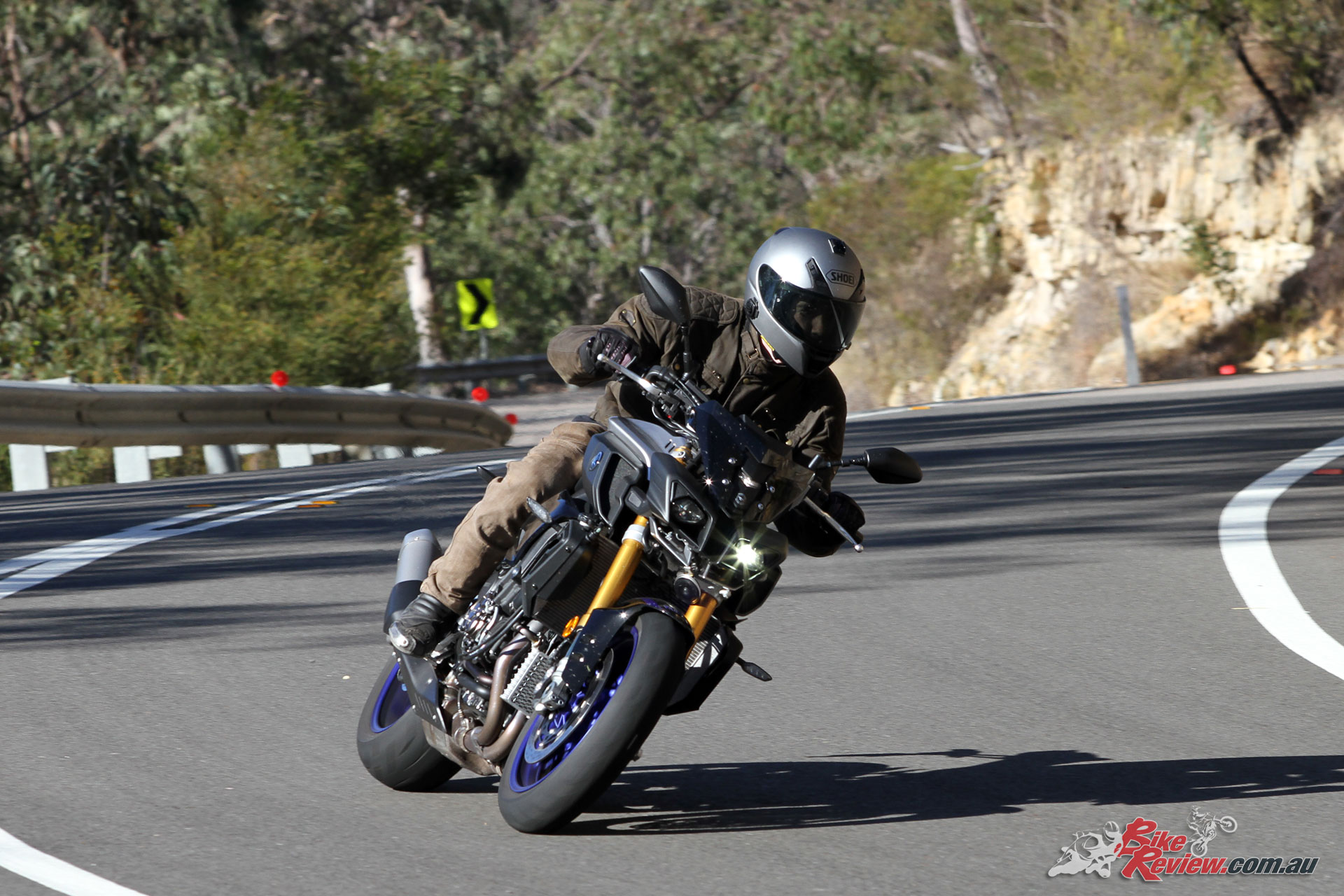
Jumping on board the MT-10SP it took a while to adjust to the electronics but once you understand the settings and get it sorted it is a weapon!
The longer I spent in the seat of the MT-10SP however the more natural everything came to feel and after the first hour I was having an absolute hoot. And naturally styling on the MT-10SP is futuristic, that’s going to be a personal thing whether you like it or not.
The bike also features an extensive electronics package from ABS, which is basically a baseline expectation these days, through to TCS (Traction Control System), Ride Modes (D-Mode), Power Modes, quickshifter (QSS), and of course the Ohlins Electronic Racing Suspension (ERS). It’s also the most user friendly system I’ve experienced.
The Ride Modes offer a range of presets through the other settings, which can then be modified quickly and easily at a standstill, or while the throttle is closed. I ended up favouring Ride Mode B, with the settings on Power Mode 2, ERS A-2 and TCS 2.
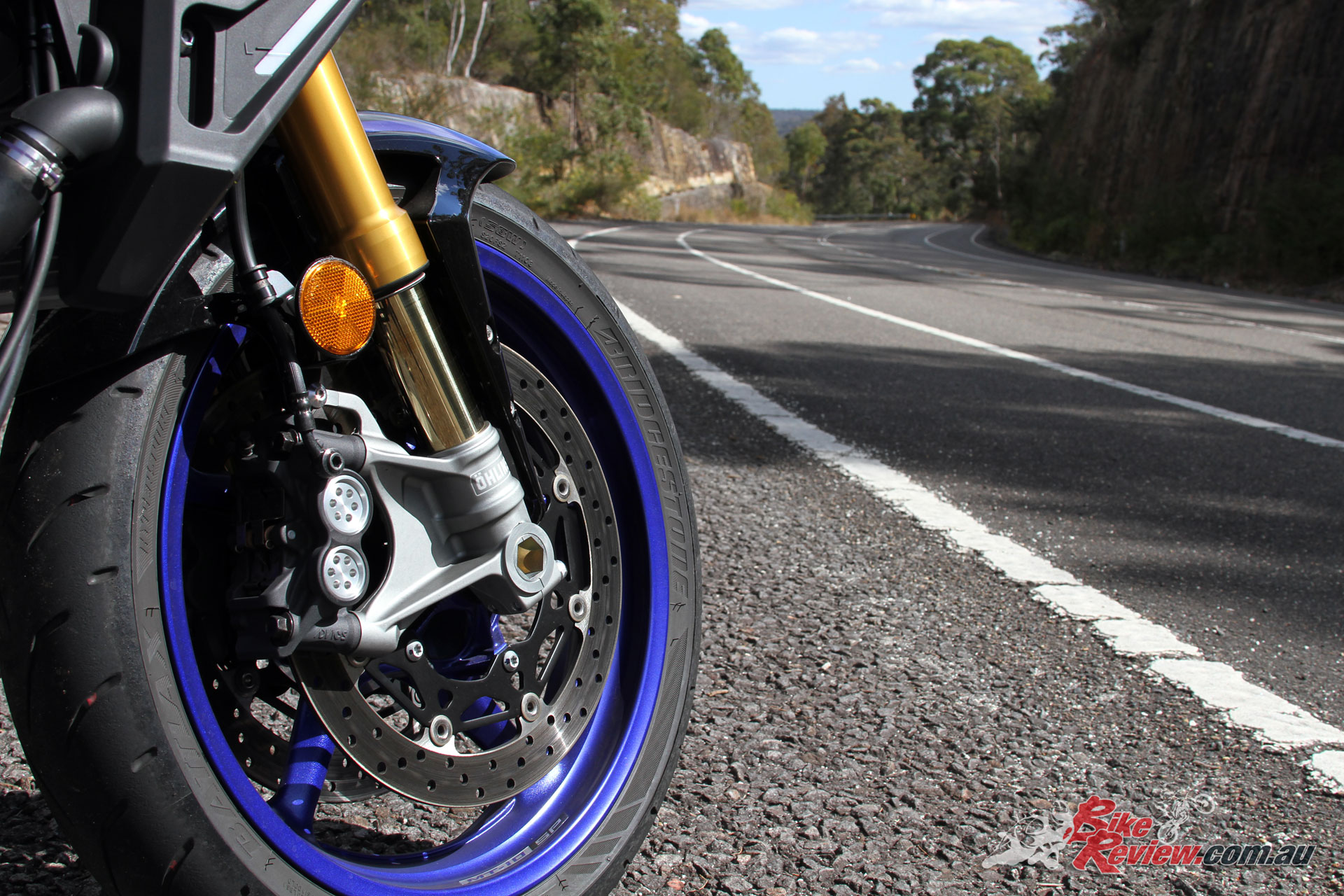
There’s a huge variety of settings to go through but the system is simple and the ERS offers two standard automatic modes, with a further three manual modes
Ride Mode A felt too aggressive on the throttle in comparison, and while I couldn’t feel a significant difference between Power 1 and 2 (in B), the combination of Mode B and Power 2 offered the smoothest throttle response and power delivery for my riding. Keeping in mind I’m not that aggressive on the throttle… Jeff preferred Moda A and thought that was smoother!
The left switchblock is almost overwhelming with the number of buttons, although that’s partially because it incorporates cruise control. With that said, there’s a flasher toggle that you use to move through the options mentioned above, and an up/down toggle to change the settings. Couldn’t be easier. The other thing that stands out on the ‘bars is the master-cylinder, where they’ve obviously saved a bit of money, with a cheaper non-radial item fitted as standard.
The MT-10SP is also heavy when you’re rolling it around by hand, you feel every kilogram of that 210kg wet weight, which is in stark contrast to riding this machine. Sure the bike is wide across the seat and between the knees, but that feels natural and comfortable at all times, except when you’ve got both feet down. It’s definitely a machine to park with care – not because it’ll fall over but so you don’t need to wrestle it into position to take off. It also reminds me of the old school 250 fours as far as being wide across the seat and tank, but super nimble.
In fact riding the MT-10SP, the ergonomics where pretty much perfect for me, with the handling become nimble and razor sharp once you’re moving at a reasonable speed. Gripping the tank is easy, reach to the ‘bars natural and tucking in was done with absolute ease.
On the freeway wind is noticeable, but wasn’t an issue one-up. With a pillion on the back and being unable to shift my body position lower it was more of a problem, and I’d probably invest in a screen regardless.
The Ohlins ERS works through an SCU (Suspension Control Unit) that takes input from various sensors, and sets rebound and compression damping on the fly. That effectively means getting the best out of your suspension with little need for adjustment and easy presets, but having ridden the MT-10SP it feels like it does more than that.
For 99 per cent of riding it was absolutely flawless in A-2 mode, with the remaining one per cent being when I was getting a kick out of the rear over really poor sections. Still well and truly impressive all things considered, especially compared to a traditional system. This was also the setting with the rebound and compression, front and rear, bumped up compared to A-1, but with less rear rebound than the manual modes – for comparison. See the tech section for the settings of each.
The front-end, and the Ohlins forks, are certainly the stronger end of the bike for me, with great support and strong feel. It doesn’t have the same dive as a traditional system, which messed with my braking technique, but once I got my head around it, I was set.
The rear can still get overwhelmed on the really hard sections or over a really aggressive bump, but once I was moving it stiffened up and handled the standard poor roads really well.
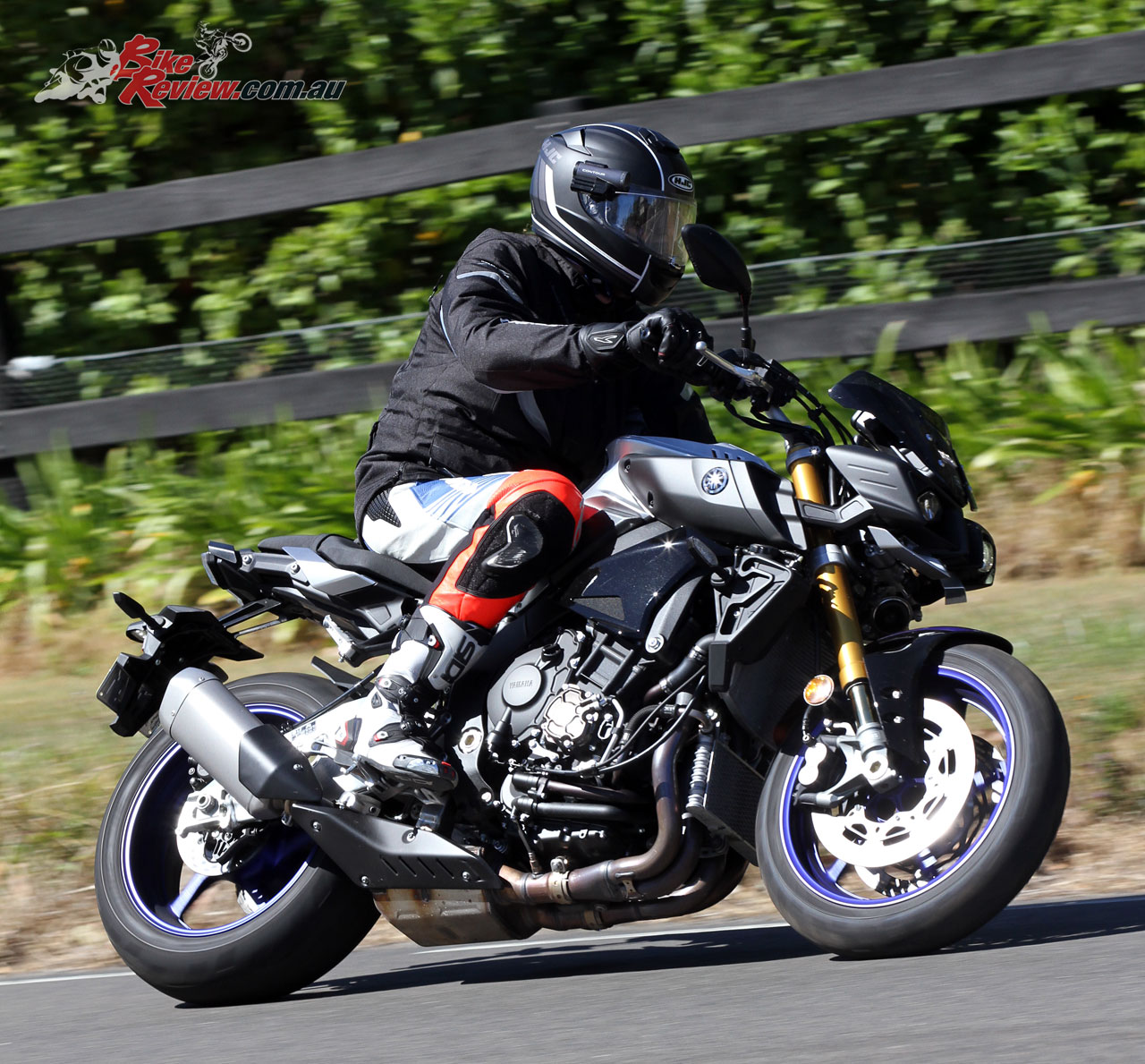
ERS A-1 mode offers a kind of baseline setting, ideal for touring or general duties, where A-2 has the rebound and compression ramped up on both the front and rear and felt sportier out in the twisties
I picked the A-2 setting after sampling A-1 and the Manual modes (1-3) as I found it offered the best all round performance, especially out in the twisties, where A-1 had the slight edge in the city over speed bumps and in the more stop-start conditions. I can see A1 holding its own on more touring orientated rides, or when the going gets rough, and keeping in mind this was using the supplied presets, not delving into individual adjustment.
Once I got over the different corner entry technique, which ended up being a little bit of front brake, or just a little rear at more reasonable speeds, the MT-10SP was a rocket through the twisties. I also don’t carry a huge amount of lean angle so I didn’t find ground clearance an issue at any point.
Steering is fairly deliberate, compared to telepathic, but small inputs provide easy corrections, while mid-corner stability was absolutely exceptional. Hard to say without back to back comparison, but possibly the best I’ve ever experienced straight out of the box. Keeping in mind I’m a regular road rider, and no Valentino Rossi.
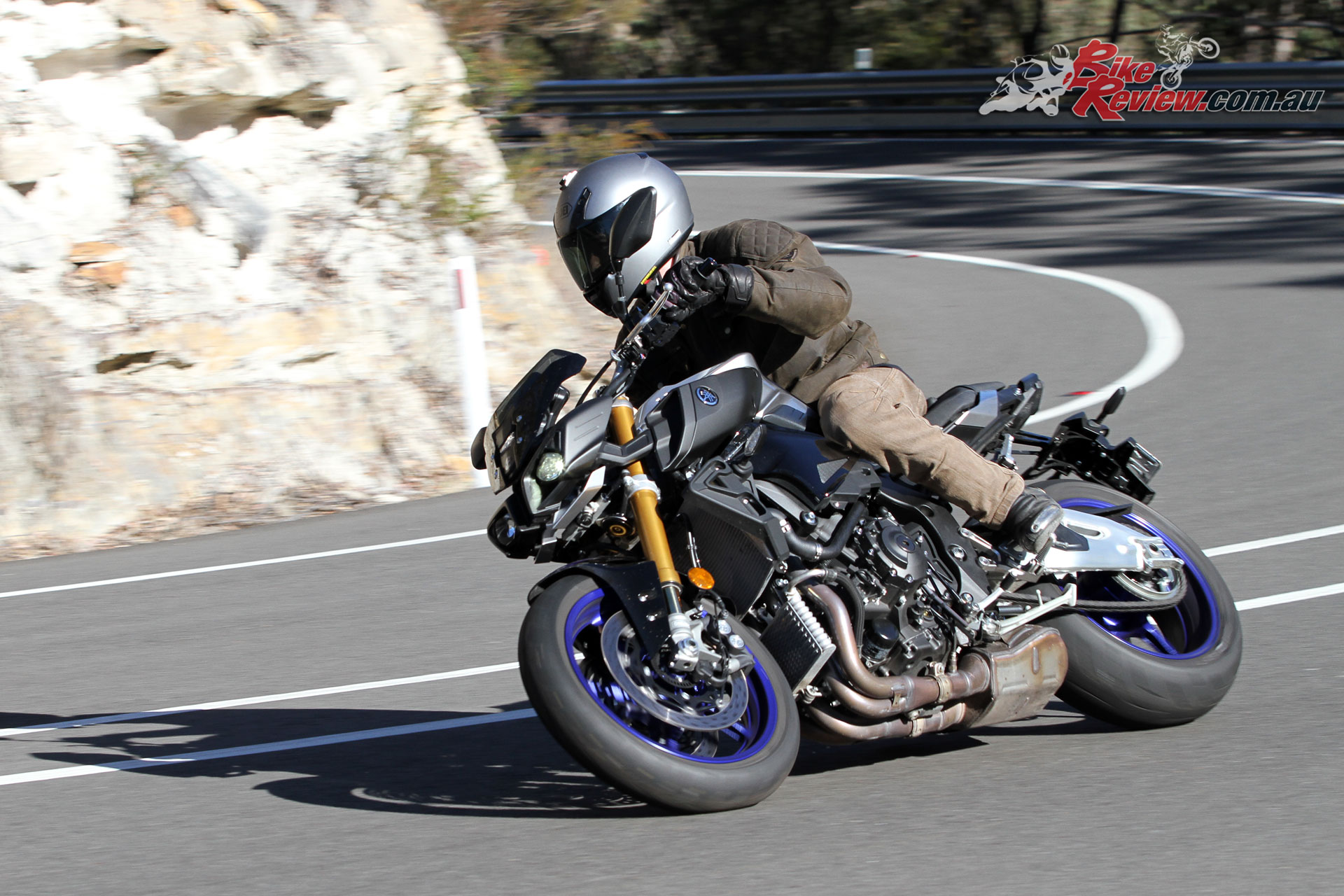
Mid-corner stability is exceptional on the MT-10SP and rolling on the throttle through, and out of corners is addictive
To put that into perspective, if you enjoy riding through the twisties you’ll know that feeling when the suspension is just doing its job perfectly, even over a rough section. That’s the feeling I came to recognise from the ERS once we were acquainted, regardless of whether I’d overcooked the corner or picked a sub-optimal line. No doubt the short wheelbase helps in this regard.
The Ohlins Racing Suspension also lives up to its name, it’s sporty and what I really took away from the MT-10SP was the fact it gave me confidence in conditions where I’d normally be worrying about the road surface, picking my braking points, lines and overall speed.
Instead I was just concentrating on taking advantage of the powerband and using a little front, or often just a bit of rear brake, to set up corner after corner, as they all effortlessly flowed together. And this was all effortless at speed. Yep. It just feels absolutely planted.
This compares to the standard version’s KYB cartridge-type 43mm forks and KYB Monocross shock setup, which are fully adjustable, but which I haven’t sampled.
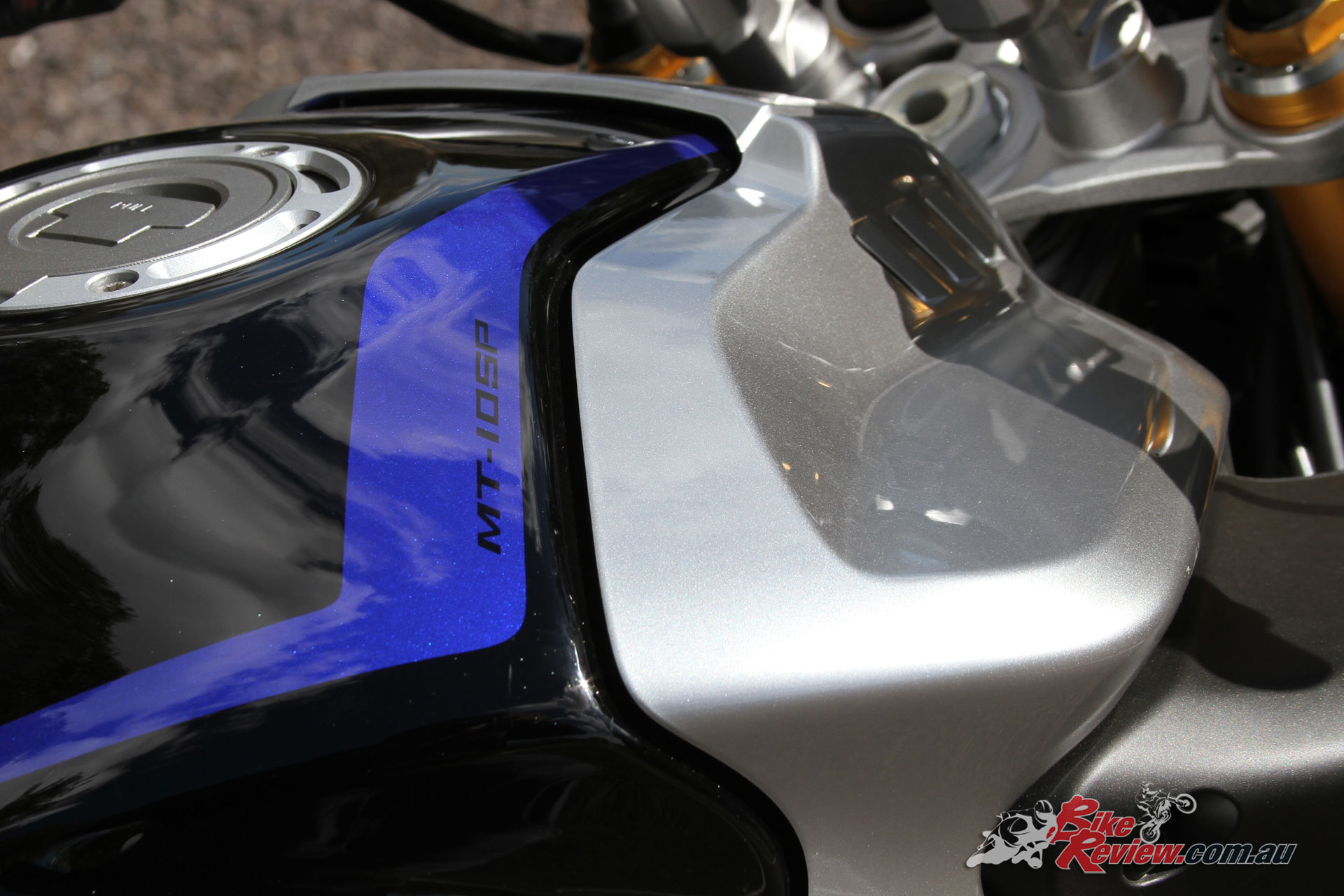
The R1M themed MT-10SP features full Ohlins suspension, where the standard version includes adjustable KYB front and rear and isn’t fitted with a quickshifter as standard
Rubber fitted during the test period was also Bridgestone Battlax Hypersport S20s, and testing conditions were very dry and moderately cold, with the tyres offering great performance and never a concern.
The crossplane four is really something else as well, as you’d expect from Yamaha. It handles even crawling through traffic, apart from that heavy clutch, and offers smooth acceleration, but nothing too aggressive below 7000rpm on gentle throttle openings. It can be a little snatchy and steppy at times, especially transitioning off and on the throttle at certain points, and it’s willing to throw you off the back if you open that throttle fast and are not prepared.
The four is incredibly free and quick revving and after 7000rpm, when the dash’s rev counter turns green you know you’ve reached the sweet spot. Tall gearing can make it somewhat hard to appreciate on many roads, as you’ll be doing 80km/h in second to reach that range. Snap open the throttle for an overtake or a nice section and you won’t be worrying about what the speedo is saying. You may be worrying about keeping the front wheel on the ground.

The crossplane four-cylinder is derived from that found on the 2015 onwards YZF-R1 and has quite a distinct character compared to a traditional four
Your eyes will be glued to the road ahead, with a massive grin plastered across your face. I also really found the bike appreciated being clear of that 7000rpm spot, if you’re transitioning off the throttle right there, there’s quite a noticeable drop off. Keep the revs above that point and you can basically just play with the throttle to pick up and drop off speed, and it’s absolutely deceptive with how much speed you’ll be carrying. My biggest concern with the MT-10SP would be holding on to my license.
The assist and slipper clutch also offers exceptionally smooth deceleration off the throttle too, which is particularly important on such a free revving machine. Yamaha explain it allows the use of lighter clutch springs, offering a lighter clutch action, but I didn’t really find it all that light.
I guess we have to be grateful it’s not worse in this regard, and the addition of the quickshifter (QSS) as standard on the SP model in 2017 is certainly welcome. The QSS itself worked extremely well with the MT-10’s super slick gearbox, but that did just mean on the occasions it didn’t perform it was even more noticeable. It certainly prefers a more aggressive riding and throttle approach – not too low in the revs and without any need to partially close the throttle. Rider error when it plays up? Pretty much.
The hoon spirit is well and truly alive in the MT-10SP and it just wants to be ridden hard, the harder, the better it performs. It just isn’t an around town bike. It’ll begrudgingly do it, but I wouldn’t want to commute on this bike in Sydney traffic daily. Granted I was surprised how little heat came off the bike when I did get stuck in evening traffic.
Now two criticisms I had were the front brakes and the fuel consumption. The rear brake is good, however I found the front a bit weak on initial bite, and it just feels strange with so little dive on the front end. There was good power there, as they can really bring the bike to a halt quick smart, however the feel is a little vague.
I did also get a bit of rear ABS activation at times, but it wasn’t particularly intrusive, and the system got a workout when we had a truck cross onto the wrong side of the road and stop, taking up half our lane, facing the wrong direction. This was followed by someone overtaking cyclists around a blind corner on the wrong side of the road.
Fuel consumption also seemed to vary from 150-200km for 15L which is on the heavy side. Performance is staggering, but even so that means a bit of care is required for fuel stops.
Overall I had amazing fun on the MT-10SP, it definitely handled a range of conditions that would have had me crying in pain on a normal sportsbike. Sure after a nine hour day I was really starting to feel it, but overall that Ohlins suspension well and truly proved its worth in my mind. Add that to stunning performance from the crossplane powerplant, wicked looks and the incredible level of confidence the bike gave me and it’s a clear winner.
When Yamaha call the MT-10SP a hyper-naked it’s not a matter of having a giggle at the marketing jargon. They are dead on.
The $3000 premium for the Ohlins ERS, a TFT and the unique R1M inspired paint scheme is the clear winner to me, with the quickshifter now coming standard on just the SP version sweetens the deal. That bumps the RRP up to $21,499 compared to $18,499, which is a hefty whack but for our terrible Aussie roads I reckon you’d never look back, especially if you’re doing the longer kms and not just the occasional weekend twisties.
2017 Yamaha MT-10SP Second Opinion – Jeff
Road & Track
When I rode the standard MT-10 at the Aussie launch back in the bike hugely impressed 2016 me. That previous generation R1 engine is a cracker and suits the naked class. The chassis is sorted and so well suited to hard road riding. The only thing lacking was, according to my test, was that it needs a quickshifter.

Jeff originally tested the MT-10 in 2016 when it was launched, and had the opportunity to ride the MT-10SP at Sydney Motorsport Park recently. he was impressed.
I stated that the MT-10 was the first bike in a long time I had not had to touch suspension settings on and that was true. I rode the bike over a wide range of conditions, mostly flat out, and had no issues at all. It was brilliant on the basic, standard KYB suspension. The MT-10 really is an incredible bike, in fact, it’s one of the best if not the best performance nakedbike ever built in my opinion.
Enter the SP version, with few nice extras, mainly the Ohlins electronic suspension and a quickshifter.
My first experience on the SP was at Sydney Motorsports Park and I had just spent the morning on the new YZF-R6, so you imagine jumping off a lightweight hi-revving supersport bike onto a big heavy nakedbike. Normally anything after an R6 would feel like a barge in rough seas… Not the MT-10SP.
The first thing I noticed of coarse was how fast the bike is, as I’d not ridden one for almost 12-months. It was 5km/h faster at the end of the chute (260km/h) than the R6 and it is naked!
The engine is off tap. I had it on D Mode A and it was just wanting to wheelstand everywhere. With the engine above 7000rpm for most of the lap, throttle connection was smooth and the long, tall gears meant that despite having the quickshifter, gear changes were infrequent and I could be lazy, using the broad power. I really can’t find any fault in the engine on the track; it is just an absolute cracker, as is the clutch and gearbox. And although a bit steppy, the throttle connection is fine in the rev range used on track.
Chassis-wise, the MT-10SP doesn’t feel as at home on a track in the way some supernakeds feel and is definitely more a roadbike than a track bike, however, it can hold its own and I was easily lapping in the 1:50-1:51 with no real effort. The limiting factor was ground clearance. The footpegs touch early and that is what slowed me from lapping faster. The seating position and handlebar shape are also more of road bias and I found it hard to get comfortable on the bike on the track.
The electronic suspension had me a bit confused as in the slower and mid speed turns the bike was planted and tracked well through the corner, however, the fast Turn One had the bike wallowing and running wide.
Support on the brakes was good and there was no rear squat off most corners but the system never quite came to grips with turn one. Suspension was on A1 (sporty). A2 is touring and the other three are manual.
On the street, the SP was an absolute blast. The quickshifter was fantastic and really makes the bike more fun, the TFT dash is complex but once learned, not too hard to navigate, but again like on the track the suspension confused me. Sometimes I would hop on the bike and it was almost unrideable and would buck and weave and wallow and other times it would be rock solid and on rails. I also found the front brakes lacked initial bite and were suffering from fade, possibly in need of new pads I’d say.
The only engine criticism I had on the stock bike back in 2016 was that B Mode was terrible and that still stands on the SP. Yamaha claim that A Mode is the more aggressive and B Mode the least but it is clearly the other way around, and B Mode on the bike is a shocker, with a very unpredictable throttle that has a mind of its own and severe throttle snatch from closed to open. A Mode, on the other hand, is easier to control and smoother. I tested the SP on A Mode, with TCS 1, ERS on A-2 and PWR on 1.
Overall for me, I would be happy with the standard KYB suspension on the stock MT-10, with a quickshifter fitted, but if I could afford it I’d grab the SP version.
2017 Yamaha MT-10SP Tech Talk
The MT-10SP builds on the 2016 Yamaha MT-10 with the addition of an Ohlins Electronic Racing Suspension system and adoption of a TFT display, plus much called for standard quickshifter (QSS).
Unfortunately there’s relatively limited information available regarding the specifics of the Ohlins ERS system, except for the fact the MT-10 is fitted with a set of 43mm Ohlins ERS forks, and ERS shock with standard preload adjustability on the rear.
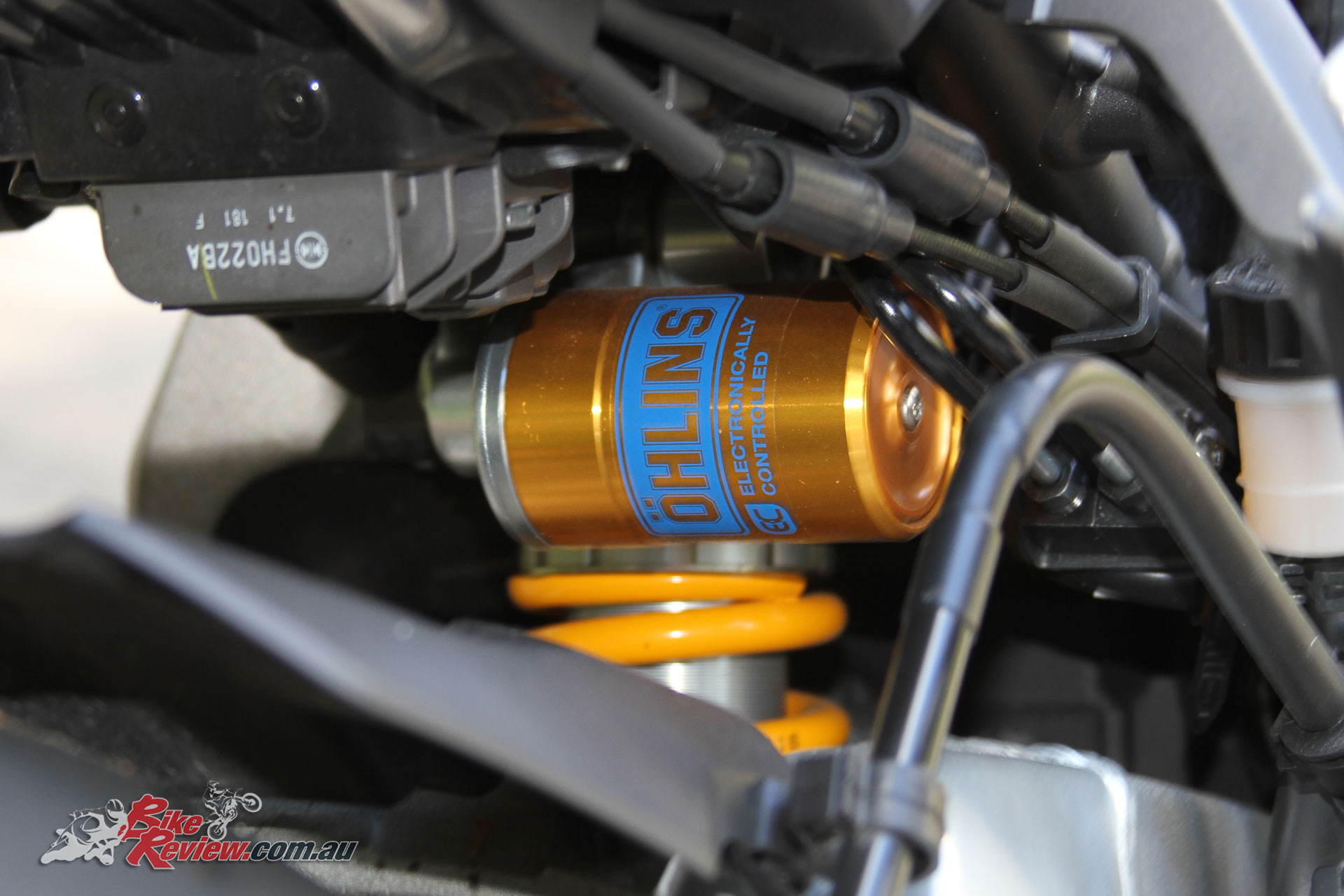
The Ohlins ERS rear shock. Rear end performance wasn’t nearly as good as the front forks but there is room for adjustment
The system includes an SCU, or Suspension Control Unit (basically an ECU for your suspension), which gathers data from a number of sensors fitted to the bike and actively controls the compression and damping settings to match the conditions.

The ERS can be accessed and modified via the right switchblock wheel, in the YRC section. Here you can see the A-2 settings
There’s five preset modes for the ERS, A-1 and A-2, which I’m assuming are the automatic versions and the M1-3 ‘manual settings’. Using the right switchblock you can enter the YRC settings which allow modification of these presets.
As it stood, A-1 was the middle of the line option, with a touch of extra rebound on the rear. In comparison A-2 had the front and rear compression and rebound significantly wound up. All three manual settings were set up the same and had a touch less compression on the front and a touch more rebound on the rear than the A-2 setting.
For the smoother sportier sections I was running A-2, and while there was a few rough sections that probably could have done with A-1, I wasn’t all that worried about switching on the move, even if it just required closing the throttle and switching the ERS settings.
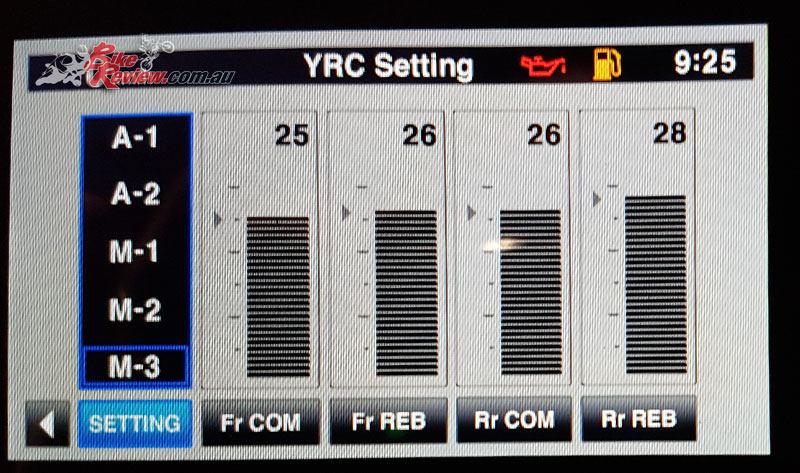
Manual modes were all set as you’ll see here with additional rear rebound. The system also displays numbers to make adjustment easier to track
As an owner however you’ll be able to dial the manual (M1-3) modes in to your specific needs, whether that’s a two-up profile, or a tweaked sporty and more relaxed option. The various settings also include a numbered ‘click’ like setting making it easier to track your changes when setting up your modes.
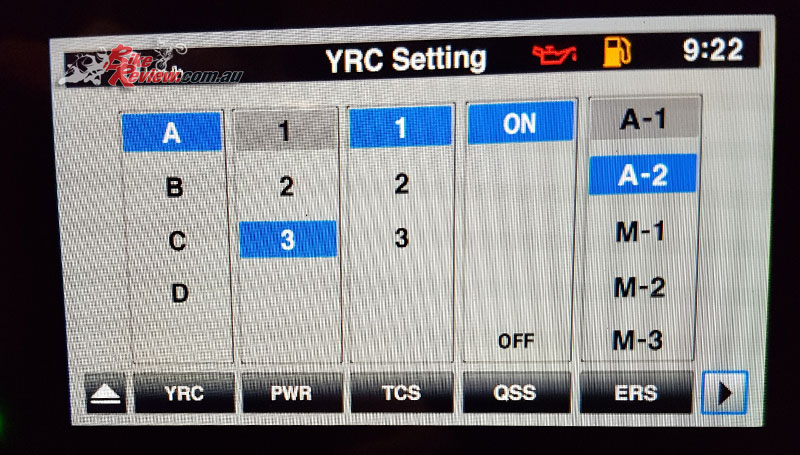
Here you can see the D Mode settings, with A selected it shows the various settings for Power, ERS, TCS, QSS.
Also carried across is the D-Mode system, which four different modes (A-D) and include Power, ERS and TCS settings, allowing for easy switching. I ended up just settling on Mode B, setting TCS to 2 (general road mode as the weather was dry), Power to 2 and ERS to A-2 as mentioned.
The key to its operation are the electronics in the YCC-T (Yamaha Chip Controlled Throttle, basically RbW) that can instantaneously alter the engine character by adjusting throttle opening, ignition timing and fuel injection volume.
There seemed to be a noticeable difference for throttle response between modes A and B, with B seeming softer and a little less aggressive, which is where I left it along with Power 2, which also seemed a little gentler for delivery. With four overall Modes, three Power settings, three TCS settings, switchable QSS (quickshifter) and your five ERS modes there’s a significant level of adjustability.
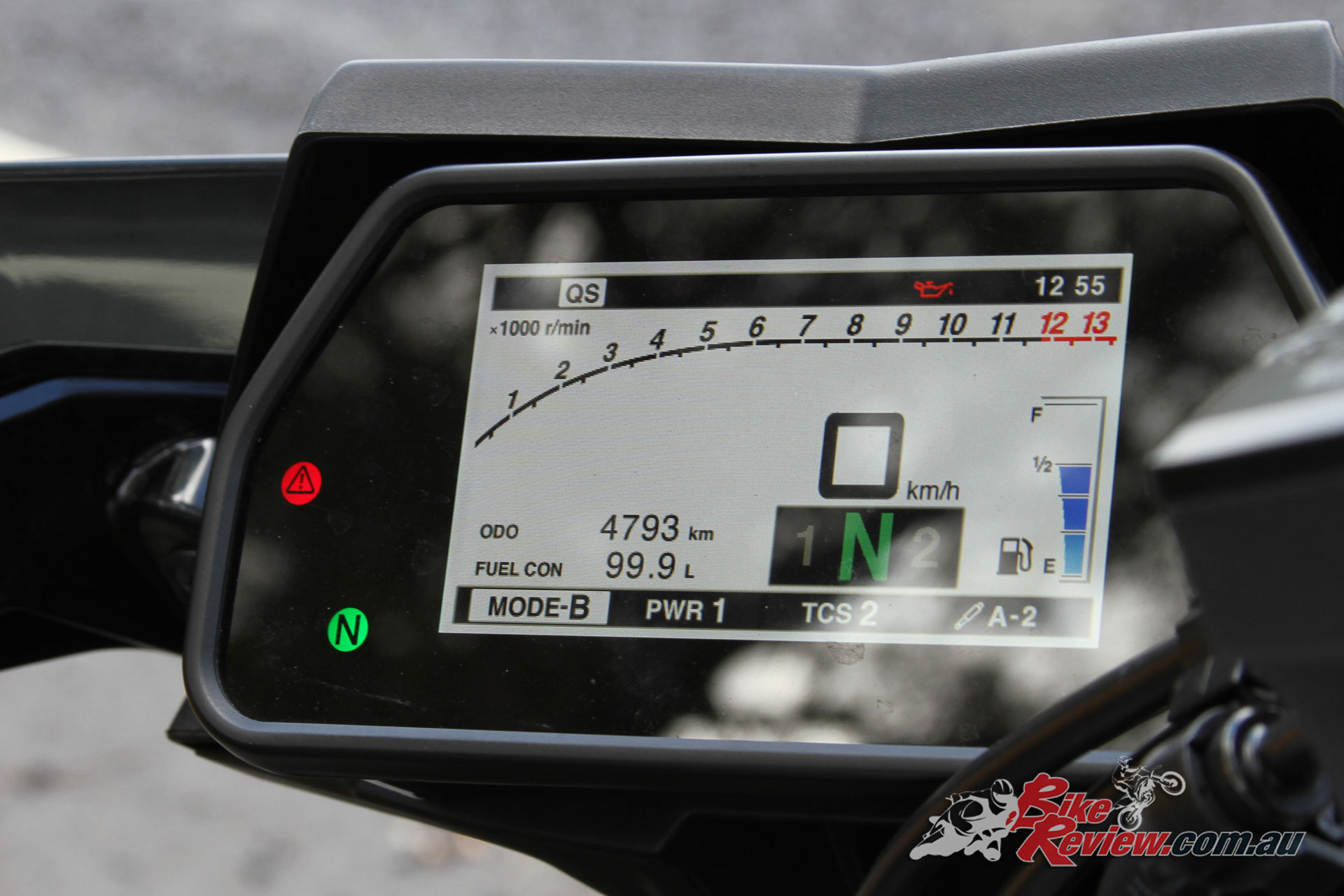
Generally you’ll be interacting with the settings via the normal dash, a flicker on the left switchblock and the up-down toggle. You can close the throttle to make changes on the run
The new TFT display is also a nice touch, displaying clear, easy to read information and switching between a white and black background depending on ambient light. This means during the day it’s nice and clear, while at night you’re not blinded by glare off your display but can still take everything in at a glance.
We covered the general technical features of the MT-10 back in our 2016 review of the standard model, but here’s a quick rundown.
The MT-10 engine is taken from the 2015 YZF-R1 (Link to be added), but features a number of significant technical changes that are designed to deliver strong low to mid speed torque, including newly designed intake, exhaust and fuelling systems, as well as an optimised crank balance.
A number of model-specific settings have also been adopted in order to enhance the direct and connected feeling between the throttle and the rear wheel that is associated with the crossplane design.
Also fitted is an A&S clutch with a specially designed slanting cam that is located between the clutch boss and the pressure plate, allowing lighter springs and lever action.
The MT-10 also comes equipped with a cruise control system that can be activated in 4th, 5th and 6th gears between 50km/h and 180km/h. A switch on the left handlebar turns the cruise control on or off, and once it is activated, the Yamaha Chip Controlled throttle (YCC-T) maintains the selected speed of the bike whether riding uphill, downhill or on a level road.
The MT-10’s chassis has been developed from the chassis used on the new generation YZF-R1. To enhance the new MT’s all round comfort in typical day-to-day usage, the Deltabox frame has a revised strength/rigidity balance that delivers accurate feedback, with a new steel sub-frame with the necessary fixtures and fittings for genuine Yamaha accessories.
The MT-10 runs with an ultra-short 1400mm wheelbase. Combined with the extra-long YZF-R1 type aluminium upward truss swingarm and subtle revisions to the chassis geometry, the 1400mm wheelbase gives light and neutral handling performance together with outstanding straight-line stability during acceleration.
The bike is fitted with dual 320mm diameter floating front rotors that feature radial-mount opposed piston calipers with sintered pads. The front braking system is matched with a 220mm rear disc with a pin-slide caliper that gives plenty of feel and precise feedback, and ABS is fitted as standard.
The dual LED headlights sit beneath a compact mask and screen, and the whole front assembly is mounted directly to the frame to accentuate the feelings of agility and lightness.
2017 Yamaha MT-10SP Specifications
PRICE: $21,499 + ORC
WARRANTY: Two-year/unlimited kilometre
COLOURS: Silver Blu Carbon
CLAIMED POWER: 118kW[160hp]@11500rpm
CLAIMED TORQUE: 111Nm[81ft-lbs]@9000rpm
CLAIMED WET WEIGHT: 210kg
ENGINE: Liquid-cooled, four-stroke, crossplane forward-inclined parallel four-cylinder, four-valve per cylinder, DOHC, 79 x 50.8mm bore x stroke, 998cc, 12.0:1 compression, D-Mode, TCS, QSS, PWR power modes, YCC-T, four-into-two-into-one exhaust.
GEARBOX: Constant mesh, six-speed
CLUTCH: Assist and Slipper clutch, wet, multiple-disc
CHASSIS: Aluminium Deltabox frame, aluminium upward-truss swingarm, steel sub-frame, Rake: 24, Trail: 102mm
SUSPENSION: Öhlins electronically adjustable telescopic fork, 120mm travel, Öhlins electronically adjustable shock, manual preload adjustability, 120mm travel
BRAKES: ABS, dual 320mm front rotors, dual monobloc four-piston calipers, 220mm rear rotor, single-piston pin-slide caliper
WHEELS & TYRES: Cast alloy wheels, 120/70 – 17 (f), 190/55 – 17 (r)
DIMENSIONS:
Seat height: 825mm
Overall height: 1110mm
Overall length: 2095mm
Width: 800mm
Ground clearance: 130mm
Wheelbase: 1400mm
INSTRUMENTS: TFT display
The Verdict | Review: 2017 Yamaha MT-10SP
Awesome!
The MT-10SP sports the Ohlins Electronic Racing Suspension, a quickshifter, a special Silver Blu Carbon colour scheme and takes the bike to a whole new level!



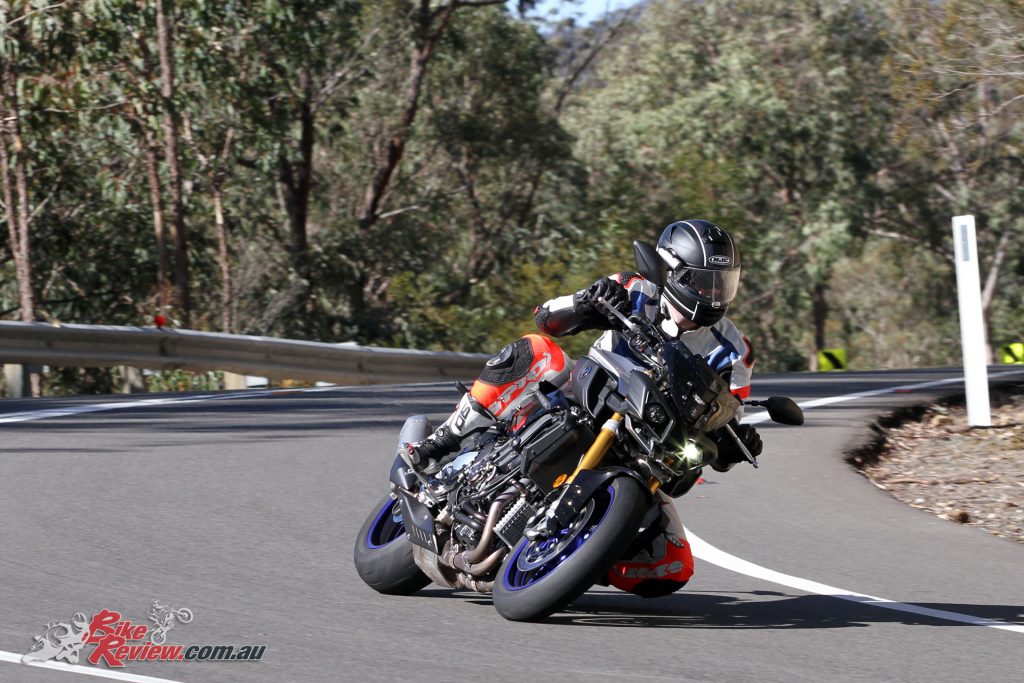
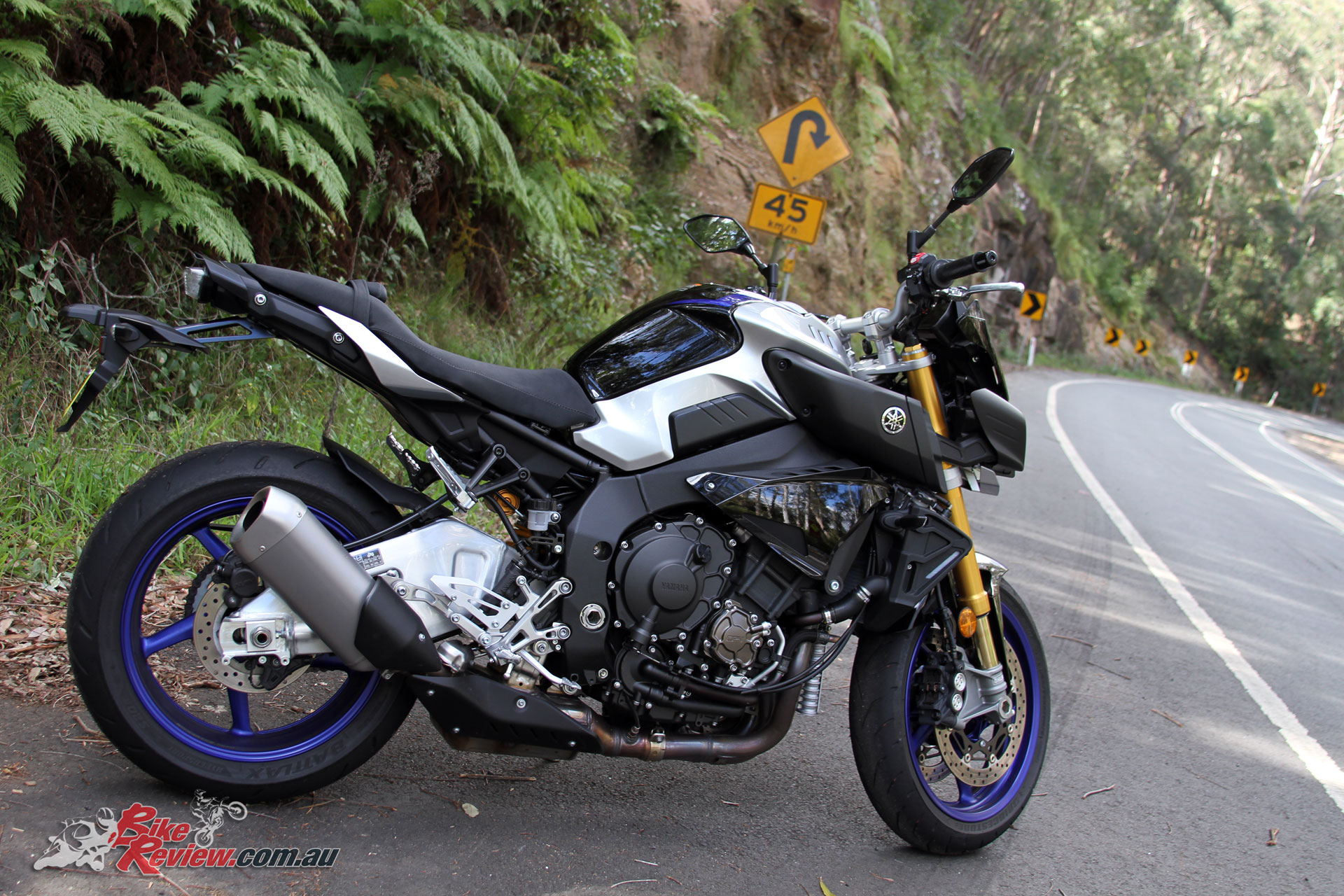

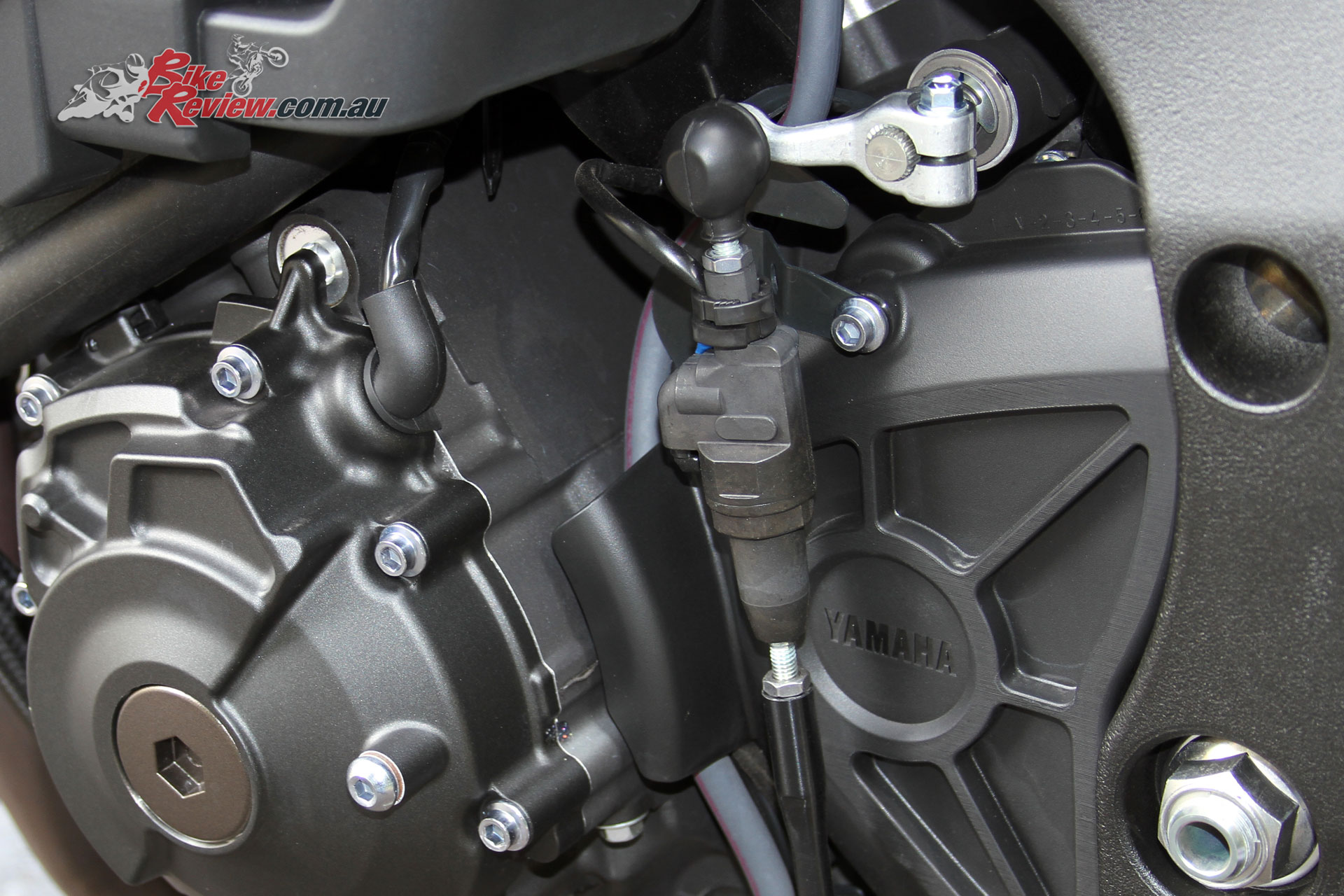
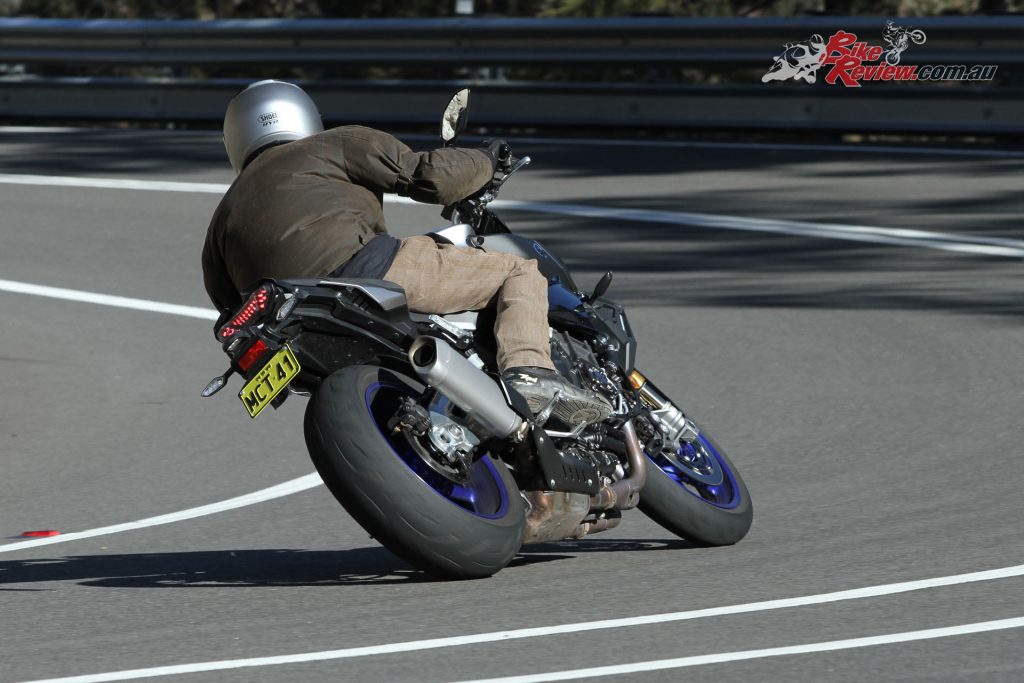

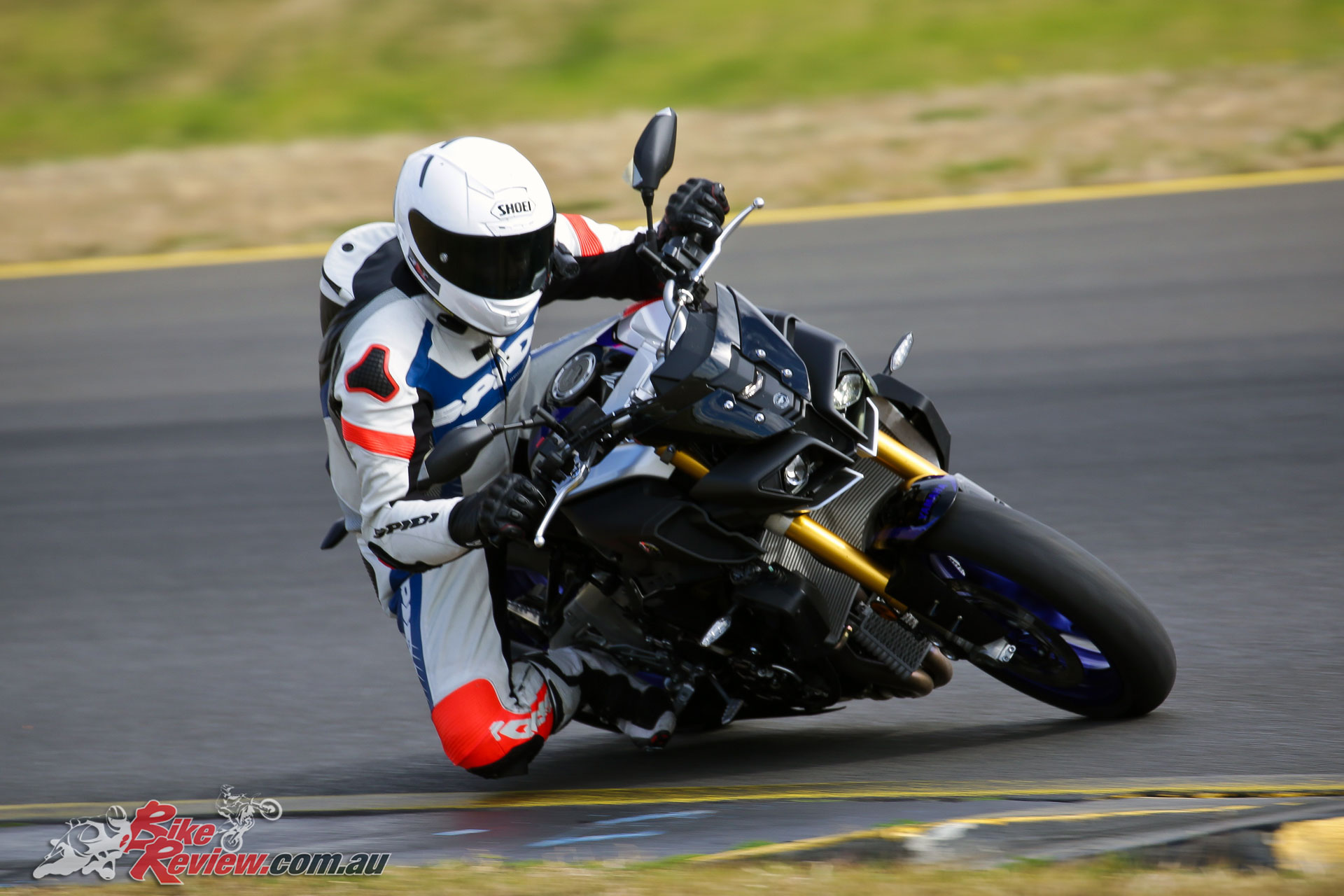
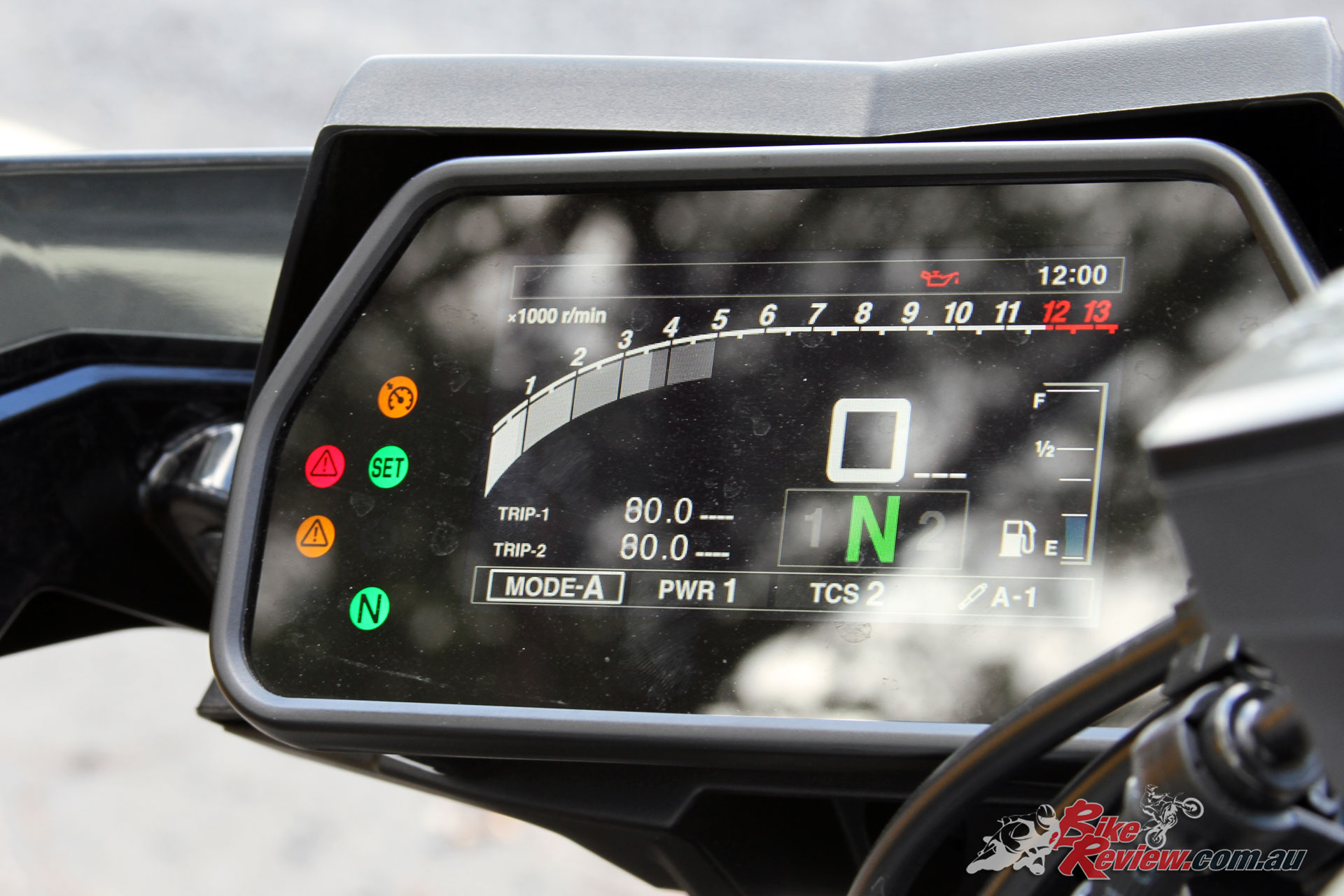
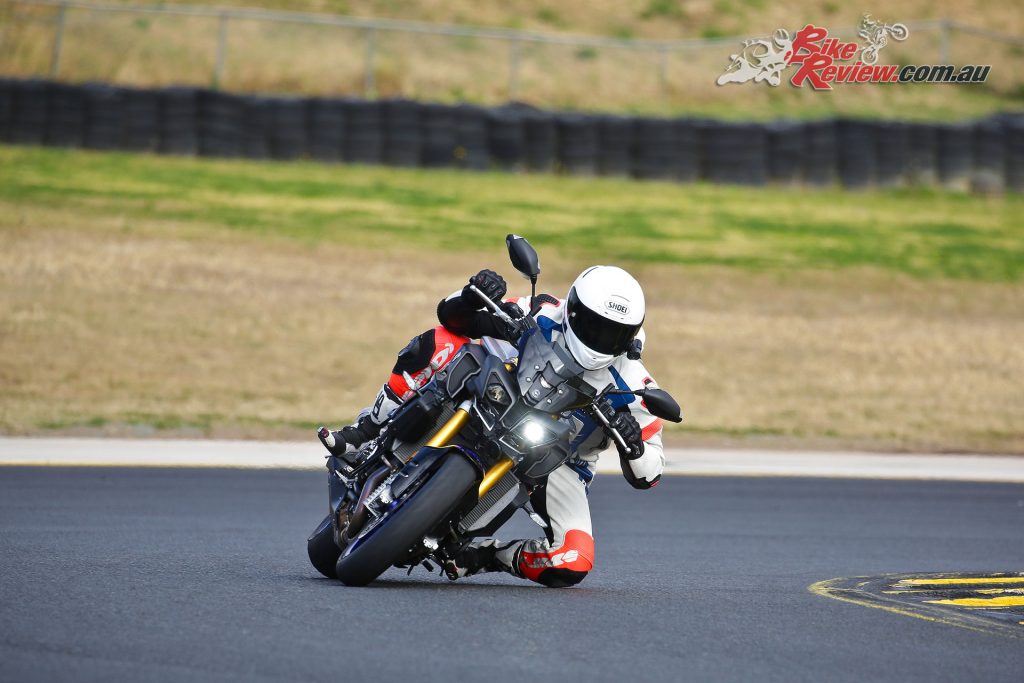
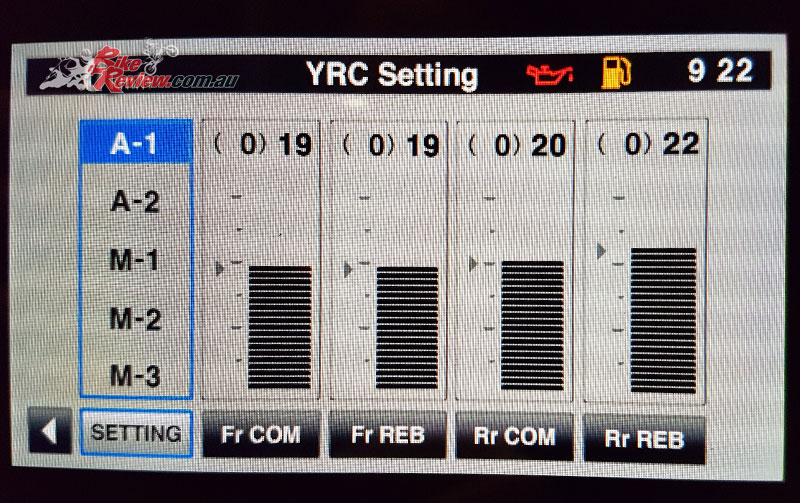
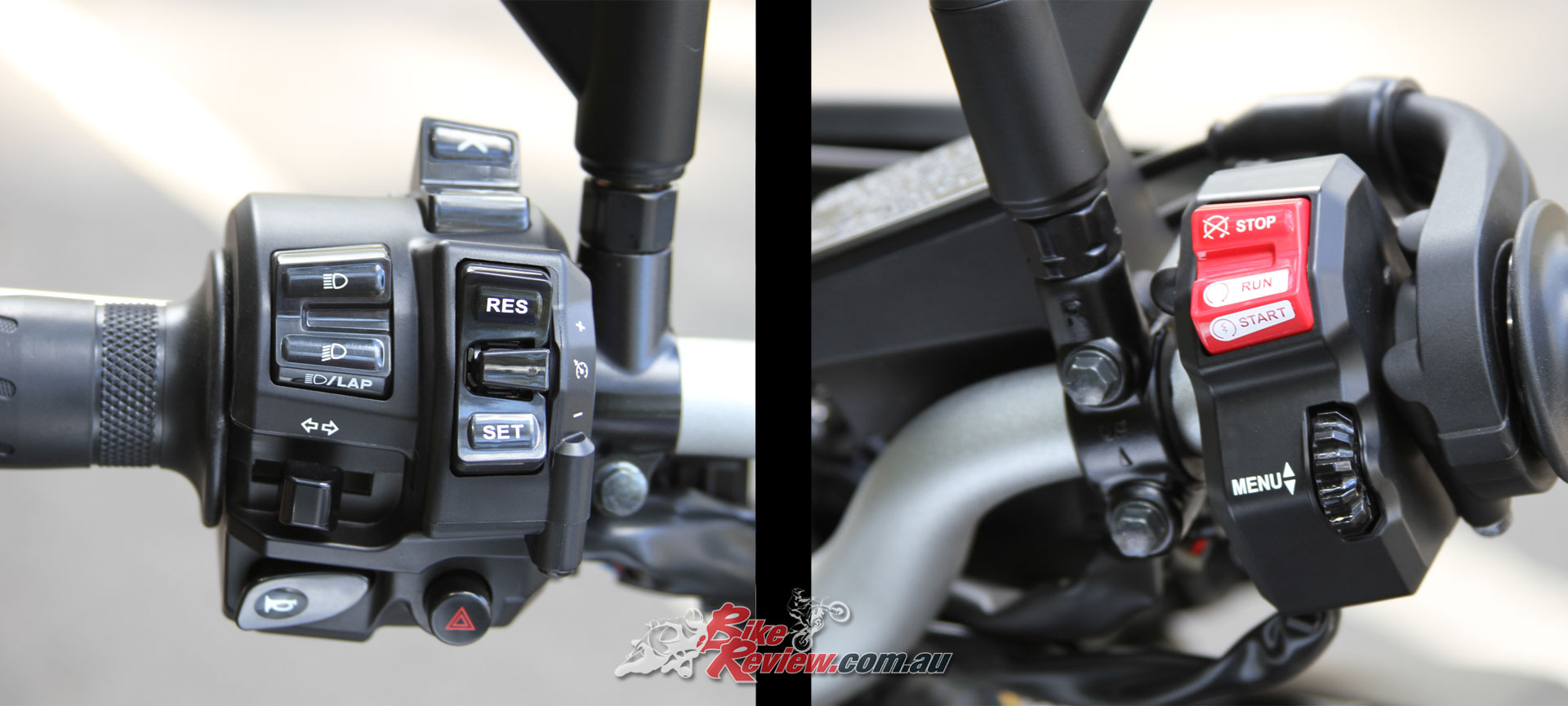

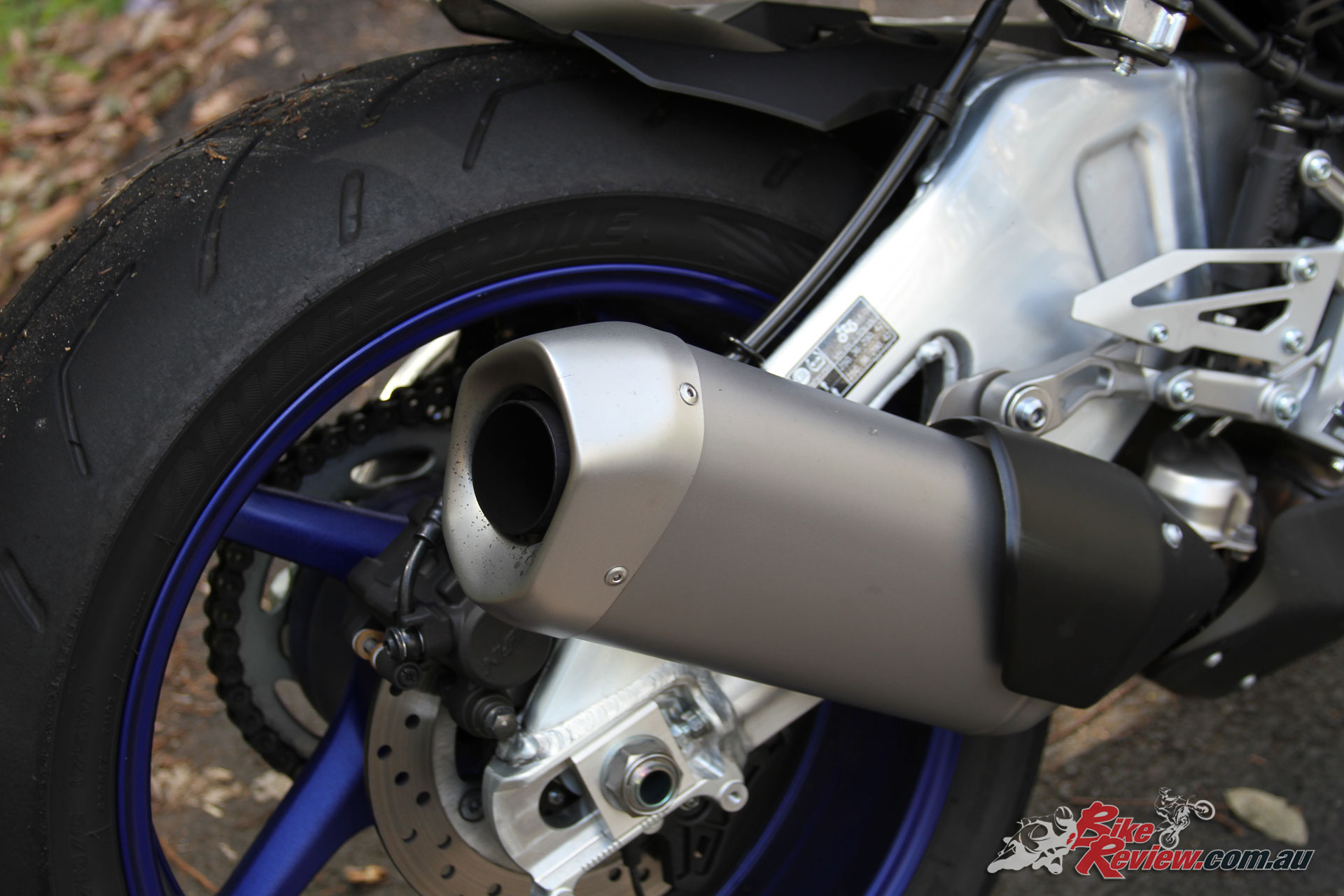

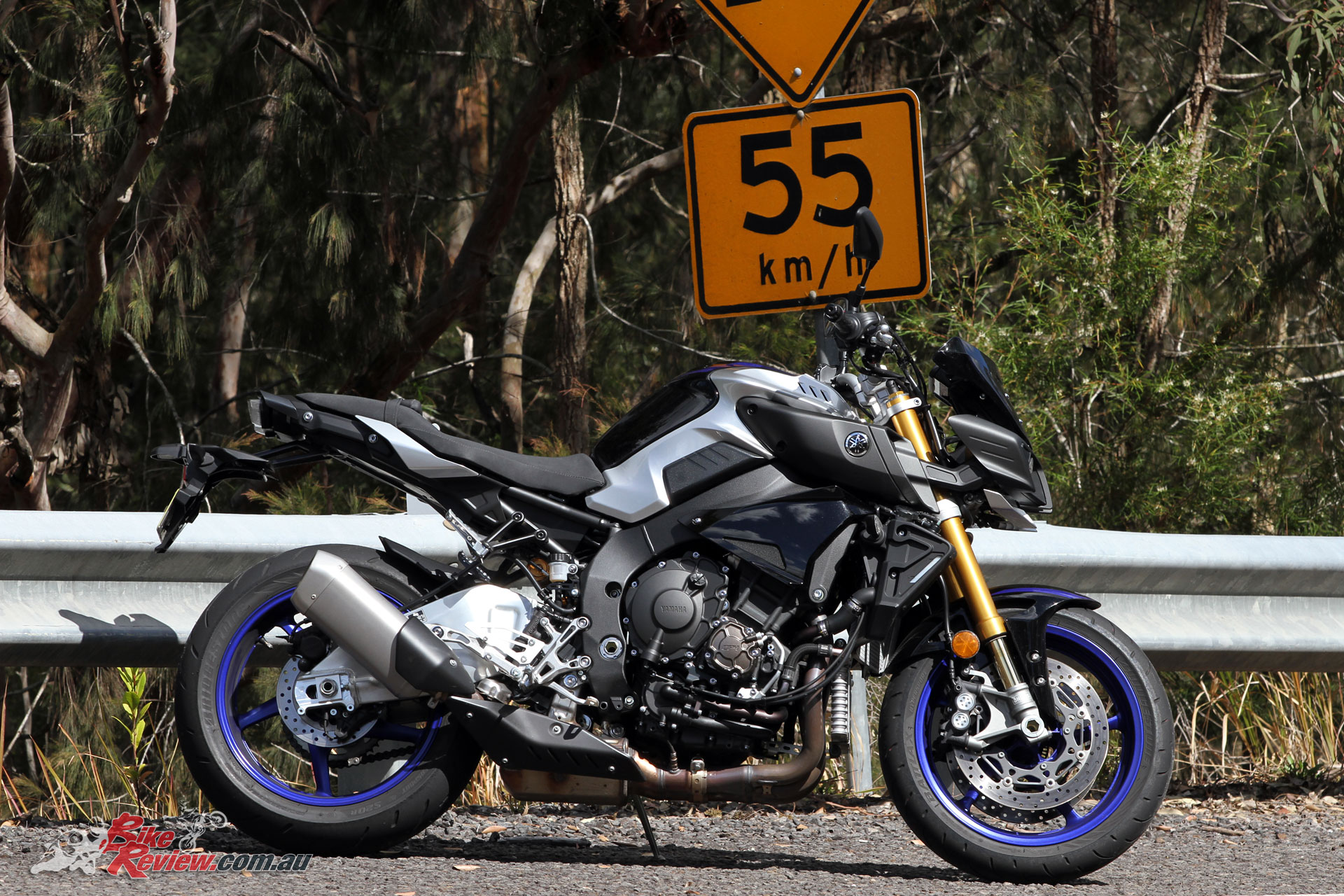
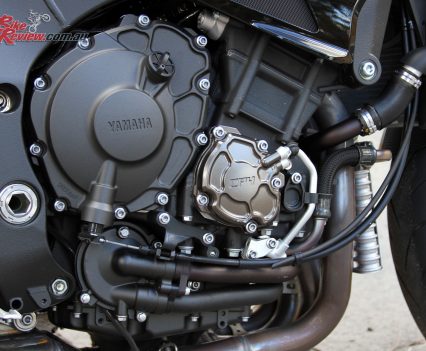
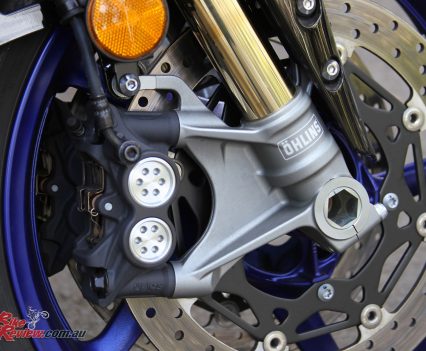
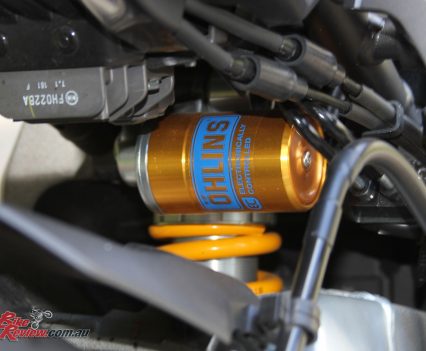
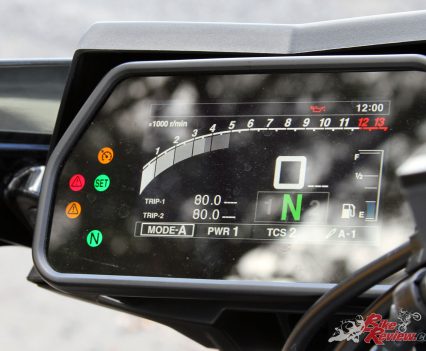
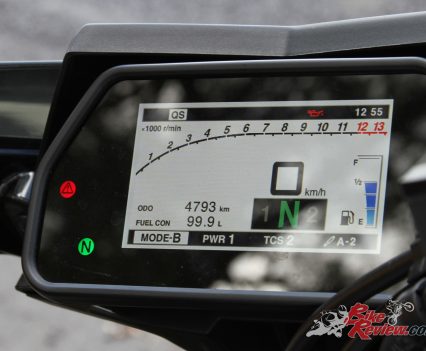
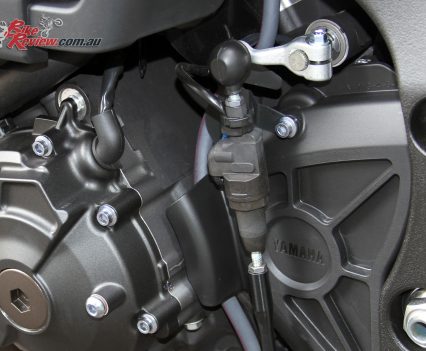
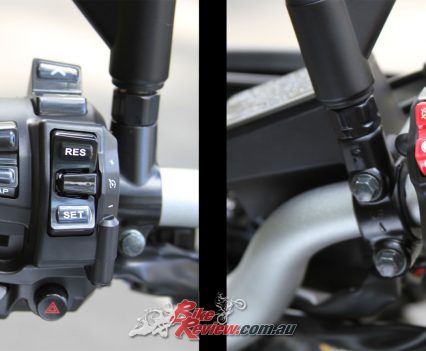
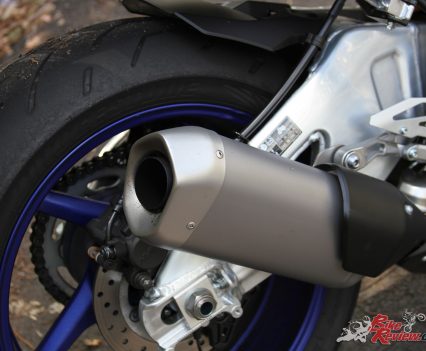
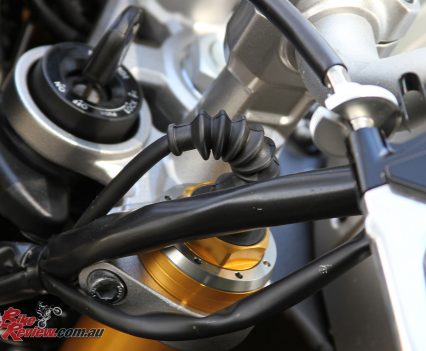
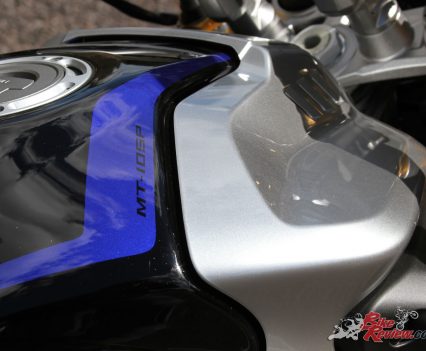
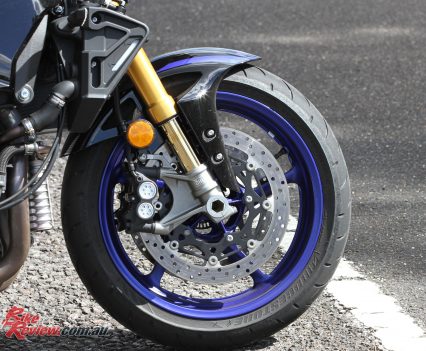
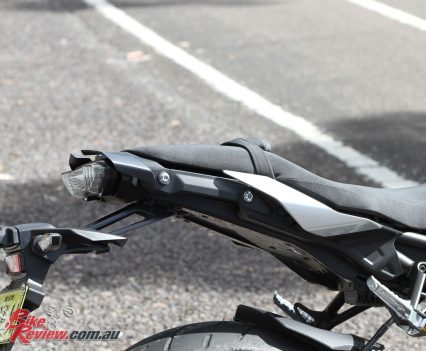
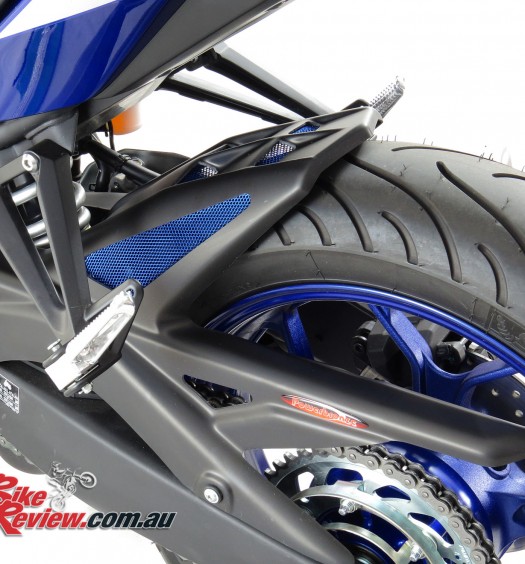
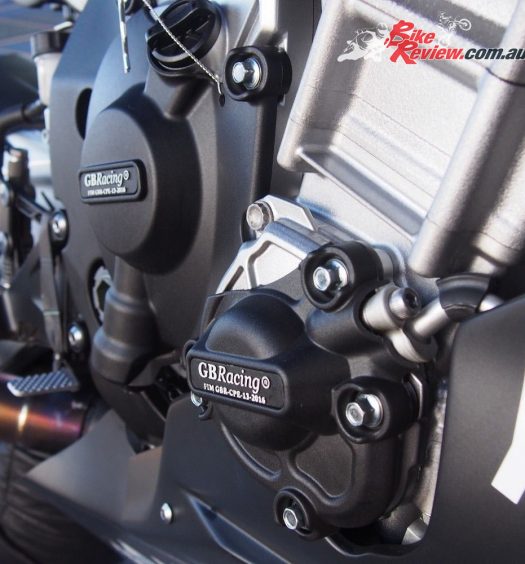
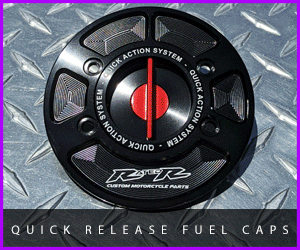













December 31, 2017
Hi, this is a great review, very informative, and you have covered every aspect of the bike in detail.
I have recently purchased an MT 10 SP, and think it is an awesome bike. I too was getting a bit confused with the suspension settings. After reading through the manual again, I now have it sorted.
A1(Sport) and A2 (less sporty) are both Active suspension modes, (automatically adjusted up to 100 times per second!) but can be adjusted 5 bars either side of standard. Now heres the weird bit. As you increase the bars up the scale (higher number) the suspension is softer, i.e. less compression or rebound damping. Opposite to what you would think.
M1 -3 are manual suspension modes, as above. Higher number = softer compression and rebound.
That’s why Mode D (rain) has PWR 3, TCS 3, ECS M3 (in preset M3, the bars are higher, which is softer, not harder, or more rebound as stated.
Kris found A1 better in town over speed bumps etc, which is actually the hardest setting ! !
M3 is the softest, and can be adjusted up to 32 (even softer)
March 21, 2018
Good boy Adrian ……..
Great advice, I pick mine up Wednesday week ……..
Thanks